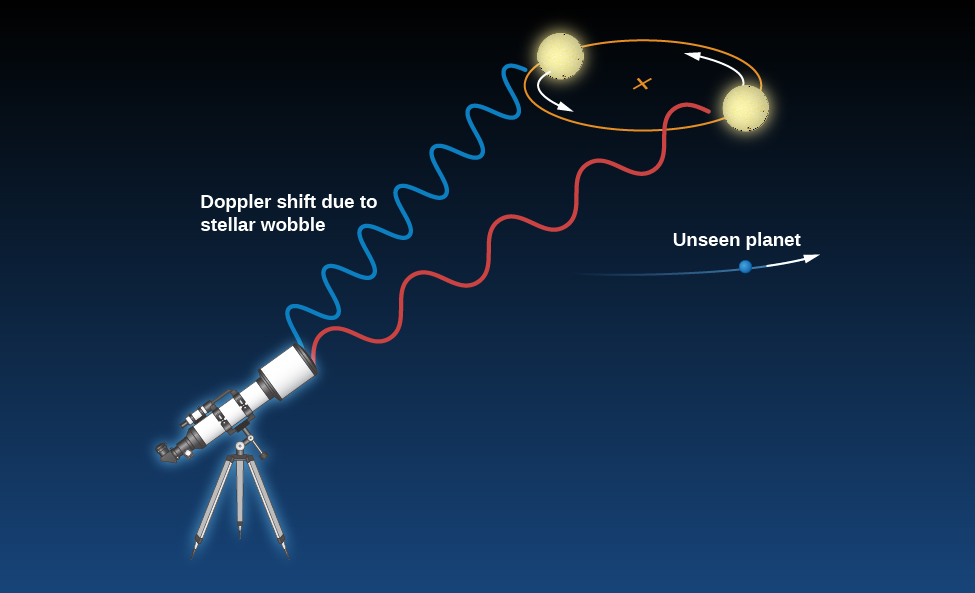| << Chapter < Page | Chapter >> Page > |
The diameter of Jupiter’s apparent orbit viewed from Alpha Centauri is 10 seconds of arc, and that of the Sun’s orbit is 0.010 seconds of arc. (Remember, 1 second of arc is 1/3600 degree.) If they could measure the apparent position of the Sun (which is bright and easy to detect) to sufficient precision, they would describe an orbit of diameter 0.010 seconds of arc with a period equal to that of Jupiter, which is 12 years.
In other words, if they watched the Sun for 12 years, they would see it wiggle back and forth in the sky by this minuscule fraction of a degree. From the observed motion and the period of the “wiggle,” they could deduce the mass of Jupiter and its distance using Kepler’s laws. (To refresh your memory about these laws, see the chapter on Orbits and Gravity .)
Measuring positions in the sky this accurately is extremely difficult, and so far, astronomers have not made any confirmed detections of planets using this technique. However, we have been successful in using spectrometers to measure the changing velocity of stars with planets around them.
As the star and planet orbit each other, part of their motion will be in our line of sight (toward us or away from us). Such motion can be measured using the Doppler effect and the star’s spectrum. As the star moves back and forth in orbit around the system’s center of mass in response to the gravitational tug of an orbiting planet, the lines in its spectrum will shift back and forth.
Let’s again consider the example of the Sun. Its radial velocity (motion toward or away from us) changes by about 13 meters per second with a period of 12 years because of the gravitational pull of Jupiter. This corresponds to about 30 miles per hour, roughly the speed at which many of us drive around town. Detecting motion at this level in a star’s spectrum presents an enormous technical challenge, but several groups of astronomers around the world, using specialized spectrographs designed for this purpose, have succeeded. Note that the change in speed does not depend on the distance of the star from the observer. Using the Doppler effect to detect planets will work at any distance, as long as the star is bright enough to provide a good spectrum and a large telescope is available to make the observations ( [link] ).

The first successful use of the Doppler effect to find a planet around another star was in 1995. Michel Mayor and Didier Queloz of the Geneva Observatory ( [link] ) used this technique to find a planet orbiting a star resembling our Sun called 51 Pegasi, about 40 light-years away. (The star can be found in the sky near the great square of Pegasus, the flying horse of Greek mythology, one of the easiest-to-find star patterns.) To everyone’s surprise, the planet takes a mere 4.2 days to orbit around the star. (Remember that Mercury, the innermost planet in our solar system, takes 88 days to go once around the Sun, so 4.2 days seems fantastically short.)

Notification Switch
Would you like to follow the 'Astronomy' conversation and receive update notifications?